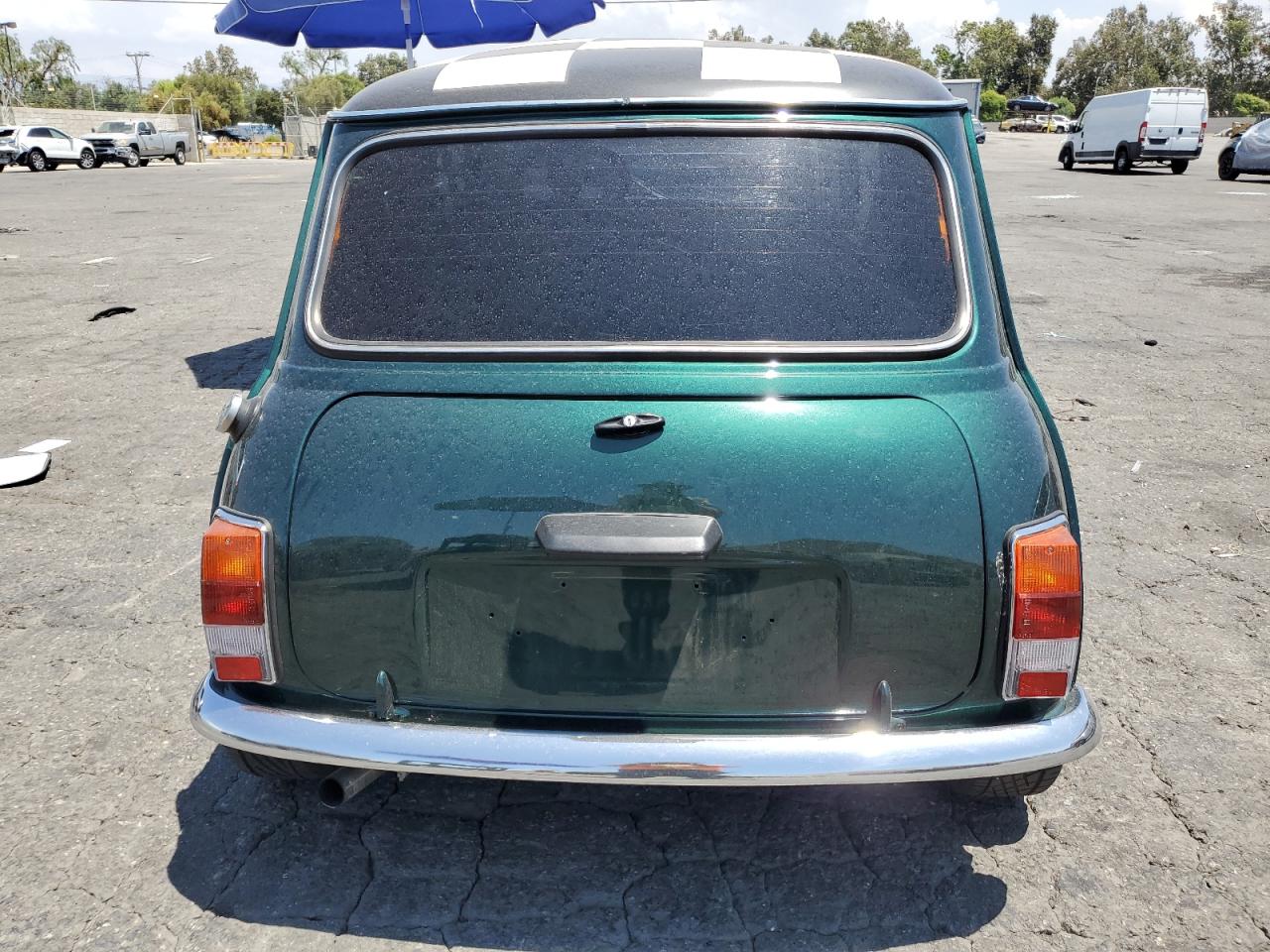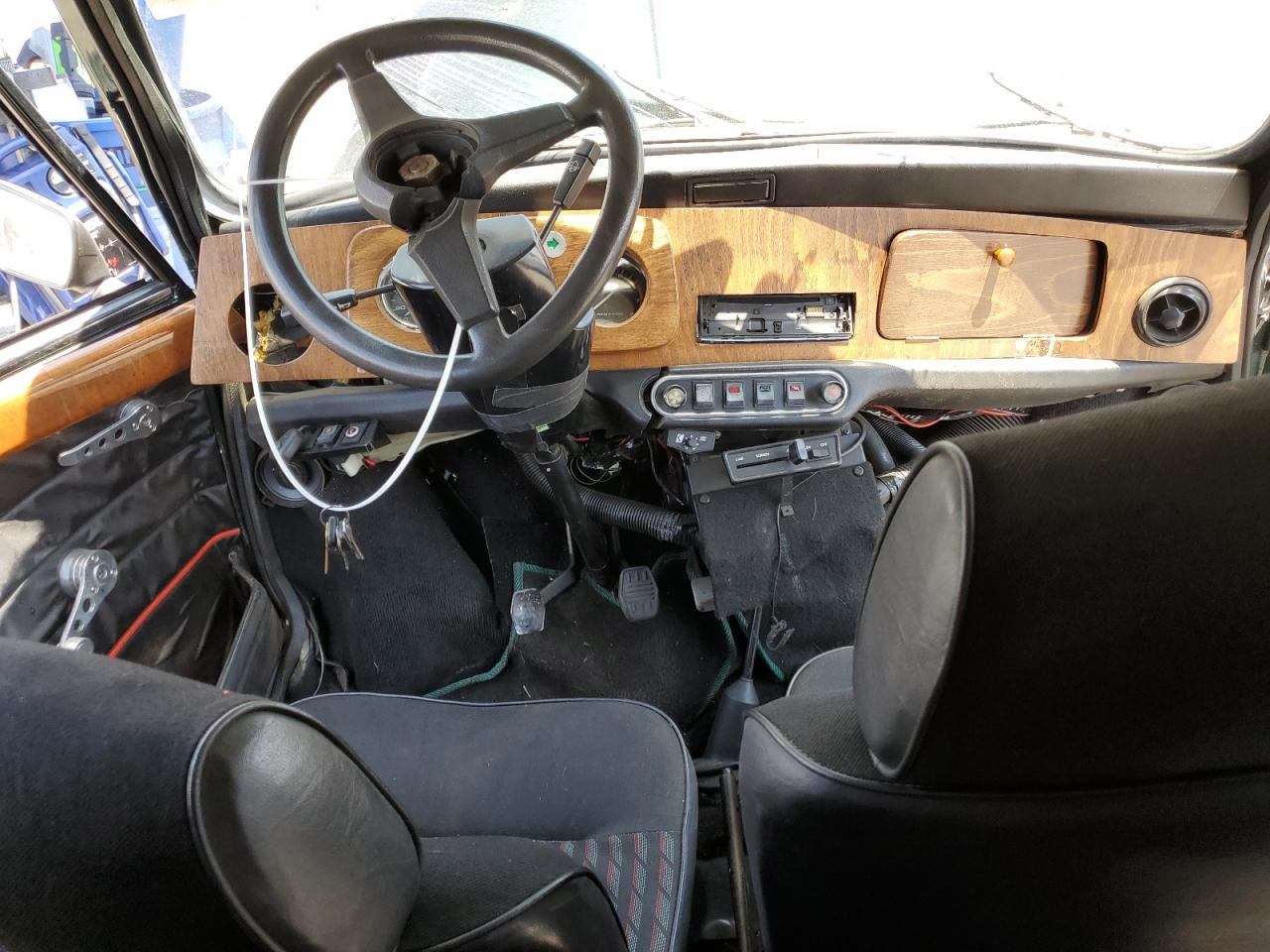Austin Mini (1)
1973 Austin Mini
Brand
Austin
Model
Mini
Generation
Mini
VIN
XA2S1985423A
Auction number
65946364
Odometer
87186 km.
Auction platform
copart.com
The Austin Mini is an icon of the global automotive industry, a symbol of the British automotive industry and the admiration of millions. Its history spans decades of innovation, style and unrivaled popularity. Long before the era of electric cars and self-driving vehicles, Mini made its indescribable contribution to the automotive world, remaining one of the most recognizable models in history.
The origins of the Austin Mini occurred in 1959 under the leadership of the British automaker British Motor Corporation (BMC). First introduced as a response to the need for a compact and economical car, the Mini immediately won the hearts of the public with its unique design and superior performance.
The Mini has evolved and been modernized over the decades, going through various modifications and changes. Among the most iconic models, it is worth highlighting the Mini Cooper, which has become synonymous with sporty style and dynamic driving. Under various brands such as Austin, Morris, Rover, Mini retained its unique aesthetics and character, recognizable on the roads of many countries around the world.
The history of the Austin Mini: from inception to legendary status
An icon of the British automotive industry, the Austin Mini first saw the light of day in 1959. Designed by Sir Alec Issigonis and manufactured by British Motor Corporation (BMC), this compact car was created in response to the need to offer simple and economical transport for the masses.
Mini quickly won the hearts of car enthusiasts with its unique design, efficiency and excellent handling. At a time when many cars were looking to get bigger, the Mini became a shining example of the "small but good" philosophy.
- Modifications: Over the years of production, the Mini has undergone various modifications, including various engine versions, body styles (sedan, station wagon, van) and even sports versions from Cooper.
- Colors: The Mini's range of colors ranged from classic shades to bright, rich colors, making it not only a practical but also a stylish car.
- Production Years: The Mini was produced between 1959 and 2000, going through several generations and upgrades.
With its small size and unique characteristics, the Mini has gained popularity not only among ordinary drivers, but also in the world of motorsport. It successfully competed in rallies and other racing competitions, renowned for its maneuverability and reliability.
However, despite its iconic status, the Mini also had its problems, including body rust, gearbox problems and a relatively small interior, making it not the most comfortable car for long trips.
A look at the early development and key moments in Austin Mini history
The history of the Austin Mini model began in 1959, when the British automobile company British Motor Corporation (BMC) introduced this small and economical car. Mini became a symbol of the era, attracting attention with its unique design and compact size. Its creator was the eminent designer Alec Issigonis, who developed the concept of a front-wheel drive car with a front engine.
There were initially two versions of the Mini: the Austin Seven and the Morris Mini-Minor. These models were popular due to their efficiency and maneuverability. The Mini was also successful in the world of rallying, which gained it additional attention and popularity. In 1961, the Mini received its first major upgrade in the form of a more powerful engine, which further expanded its audience.
Important moments in history:
- 1959: Austin Mini introduced to the automotive market;
- 1961: Model updated with more powerful engine;
- 1964: Launch of the Mini Cooper, a special sports version designed by John Cooper and the Cooper Car Company;
- 1969: Launch of the Mini Clubman, an updated version with a redesigned front end and an improved interior.
Despite its success, the Mini also had problems, such as lack of comfort and limited interior space. After all, Mini was able to stay in the market for many decades, continuing to attract attention with its unique styling and performance.
Austin Mini modifications: from classic versions to modern adaptations
The history of the Austin Mini model includes many modifications, starting with its first release in 1959. The main changes affected both appearance and technical characteristics, making the Mini more and more advanced and easy to use.
One of the most famous modifications is the Mini Cooper, developed in partnership with racer John Cooper. This version featured a sportier design, improved suspension and a more powerful engine, making it incredibly popular among car enthusiasts and racing participants.
- Mini Clubman: In 1969, the Mini Clubman was introduced, which featured revised front and rear styling and a more spacious interior.
- Mini Countryman: Introduced in 1961, this variant was a station wagon with increased capacity and a higher ground clearance, making it ideal for country trips and outdoor activities.
Overview of different models and variations
The Austin Mini has a rich history, dating back to its debut in 1959. Over the course of decades of production, the company released many modifications, each with its own unique features.
Among the most famous models is the Mini Cooper, which has become a symbol of British style and dynamic driving. It was available in various variations, including the Cooper S with a more powerful engine. In addition, special versions were released, such as the Mini Cooper Works, aimed at sports driving enthusiasts.
Design and functionality
Design: The Austin Mini is renowned for its compact and unique appearance. It has a unique silhouette, a high roof and round headlights that have become its characteristic features.
Engines: The model offered various engine options, ranging from the economical 850cc to the more powerful 1275cc. This allowed the vehicle to be selected based on performance needs.
Functionality: Despite its small size, the Austin Mini was a surprisingly capable car. The interior space has been optimally utilized, providing comfortable accommodation for both driver and passengers. The luggage compartment was also roomy enough for everyday needs.
Color range and years of production: palette of choice and evolution of the model
The history of color schemes in Austin Mini models is a fascinating journey that reflects not only the tastes of the era, but also the manufacturer's desire for innovation. Since production began in 1959, the Mini has been available in several classic shades such as orange, green, red and blue.
Over time, with each new generation, the color range of the Mini model was gradually expanded and updated. Throughout the 60s and 70s, brighter and bolder shades emerged, emphasizing the car's playful and distinctive styling.
Here are some significant moments in the history of Mini colors:
- 1959-1967: Classic colors such as Aston Martin Green and Oxford White were most common.
- 1967-1974: The introduction of vibrant colors such as Fluorescent Orange and Palladian Lilac reflected the cultural trends and tastes of the era.
- 1980-1990: The era of pastel shades such as Mocha Brown and Minster Yellow fit into the decade's aesthetic.
- 1990-2000: The Mini became a symbol of retro style, with colors such as British Race and John Cooper calling on the brand's heritage.
The evolution of Mini colors reflects not only changes in fashion trends, but also sociocultural shifts. Each shade becomes not just the buyer's choice, but also part of the history of this iconic car.
Analysis of popular color options and changes over different periods
Studying the color preferences of Austin Mini owners gives us an interesting look at the evolution of tastes and trends in the automotive industry. Throughout the model's history, there have been significant changes in preferred colors, often reflecting fashion trends and public preferences.
When the model was first introduced in the 1960s, the most popular colors were classic and understated shades such as white, gray, and navy blue. These colors were in keeping with the perception of cars at the time as a means of transportation rather than a stylistic expression of individuality.
Over time, in the 1970s and 1980s, the color range became more varied and vibrant. Shades such as red, yellow and green gained popularity, reflecting the brighter and more optimistic trends of the time. These colors began to symbolize a more active and individual approach to cars.
In subsequent decades, with the development of car painting technologies, more complex and non-standard shades became possible. Mini models began to be offered in a wide range of colors, including metallic, pearl and matte options, allowing owners to choose a color that reflected their personality and style.
Overall, the analysis of Austin Mini color preferences reflects not only the evolution of owner tastes, but also changes in culture and society. From classic and understated shades to bright and expressive colors, Mini remains a popular and recognizable car that continues to embody the spirit of its time.













